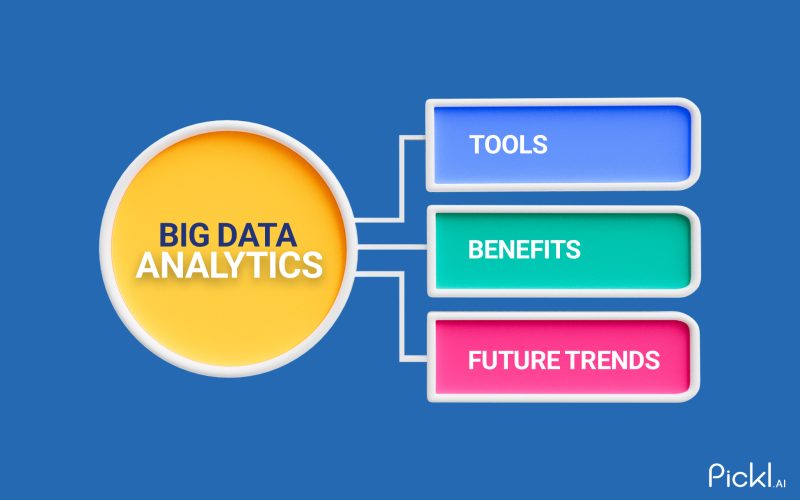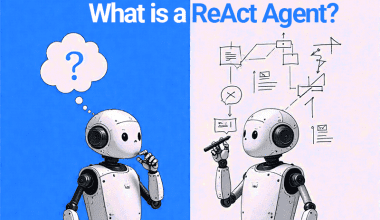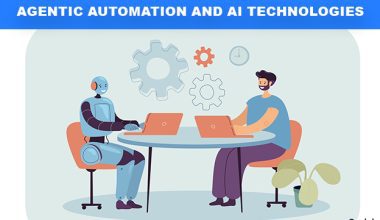Summary: Big Data analytics involves examining large, complex data sets to uncover hidden patterns, correlations, and insights. It helps organizations make informed decisions, improve operations, and predict trends. Techniques include data mining, machine learning, and statistical analysis, enabling businesses to gain competitive advantages and enhance customer experiences.
Introduction: What is Big Data Analytics?
In today’s digital-first world, organizations are generating and storing more information than ever before. In every sector, including D2C, SaaS, AI tech, healthcare, and finance, there is a significant amount of data involved. Big data analytics helps transform this vast pool of data into actionable insights that drive innovation, operational efficiency, and smarter decision-making.
By combining powerful tools, advanced algorithms, and high-speed processing, businesses can uncover trends, predict outcomes, and personalize customer experiences at scale.
What is big data analytics?
Big data analytics is the process of examining large and complex datasets, often too big for traditional data-processing applications, to uncover patterns, correlations, and insights. This process uses statistical analysis, machine learning models, and predictive modeling to convert raw data into valuable business intelligence.
For example, a D2C brand may use big data analytics to identify buying patterns, forecast demand, and optimize pricing strategies. These insights help companies and stakeholders to make the right decisions, rather than reactively, in competitive markets. Similarly, agriculture businesses now use big data to monitor weather patterns, improve yield predictions, and optimize irrigation.
Key Characteristics of Big Data
Big data is commonly described using the 5 Vs. Understanding these characteristics is important for selecting the right big data analytics tools and designing efficient data strategies.
Volume
Refers to the massive amount of data generated continuously from various sources. It represents the scale of data, often measured in terabytes or petabytes, creating storage and analysis challenges.
Velocity
The speed at which data is generated, processed, and analyzed. Big data flows rapidly from devices, social media, and sensors, requiring real-time or near-real-time processing for timely insights.
Variety
The diversity of data types, including structured, semi-structured, and unstructured formats such as text, images, videos, and logs, coming from multiple heterogeneous sources.
Veracity
The accuracy, reliability, and trustworthiness of data. It addresses data quality issues like inconsistencies, biases, and noise that can impact decision-making.
Value
The meaningful insights and business benefits extracted from big data. It emphasizes turning raw data into actionable knowledge that drives growth and competitive advantage.
Various Types of Big Data Analytics
Big data analytics can be divided into four types. Understanding each type helps to choose the best as per our needs.
- Descriptive Analytics: This data type explains what happened in the past by using historical data.
- Diagnostic Analytics: It helps us identify why something happened by finding the root causes of the problem.
- Predictive Analytics: This type of analytics uses data models to forecast future outcomes that help stakeholders to make key decisions.
- Prescriptive Analytics: Suggests the best course of action possible based on predictive models.
Organizations often use these types in combination to form a comprehensive decision-making framework.
Popular Big Data Analytics Tools and Platforms
The growing demand for big data analysis has led to the development of specialized tools and platforms. The popular big data analytics tools include
Apache Hadoop
Apache Hadoop is an open-source framework enabling the distributed storage and processing of vast datasets across clusters of commodity hardware. It uses the Hadoop Distributed File System (HDFS) for fault-tolerant, scalable data storage and MapReduce for parallel data processing, optimizing efficiency and reliability.
Apache Spark
Apache Spark is a powerful, open-source analytics engine designed for fast data processing. It excels in-memory computing, allowing rapid processing of large datasets for real-time analytics, machine learning, and streaming, significantly outperforming traditional disk-based systems.
Tableau
Tableau is a leading data visualization software that empowers users to create interactive, shareable dashboards. Its intuitive interface enables easy exploration and understanding of complex data through dynamic charts, graphs, and maps, facilitating data-driven decision-making.
Power BI
Power BI is Microsoft’s comprehensive business intelligence platform that transforms raw data into rich visual insights. It integrates with various data sources to provide interactive reports and dashboards, helping organizations monitor performance and uncover trends efficiently.
Google BigQuery
Google BigQuery is a fully managed, serverless cloud data warehouse designed for scalable, real-time analytics. It processes large datasets quickly using SQL-like queries, enabling businesses to gain timely insights and make data-driven decisions without infrastructure management.
These tools integrate with cloud computing, machine learning libraries, and streaming platforms to create robust analytics pipelines.
Industry Use Case of Big Data Analytics
We understood what data analytics is and its tools and technologies. Let’s discover how big data analytics is reshaping industries across the globe:
Data Warehousing
Big data analytics through platforms like Google BigQuery consolidates large, diverse datasets into a centralized repository. This enables organizations to run complex queries and generate real-time insights that streamline business reporting and support informed decision-making.
Real-Time Analytics
Businesses leverage big data analytics to process streaming data instantly, enabling them to monitor user behavior, detect trends, and respond swiftly. This is crucial in e-commerce and finance industries where timely insights drive dynamic customer engagement and risk management.
Machine Learning & AI
Big data platforms integrate machine learning capabilities, allowing companies to build and train predictive models using vast datasets. This accelerates innovation in areas such as customer behavior prediction, fraud detection, and automated decision-making without needing specialized data science tools.
Geospatial Data Analysis
Big data analytics processes geographic and location-based information to optimize business operations. Retailers use it to analyze customer distribution and preferences by location, helping tailor marketing strategies and improve site selection decisions.
Customer and Marketing Analytics
By analyzing large volumes of customer interaction data, businesses can segment audiences, personalize marketing campaigns, and forecast customer lifetime value. This enhances marketing ROI and improves customer targeting by understanding behaviors and preferences in detail.
Advantages of Big Data Analytics
Using big data analytics offers a lot of advantages to businesses. By aligning these benefits with strategic goals, businesses can maximize their return on investment.
Data-Driven Decisions
Empowers organizations to base their strategies and actions on analyzed data rather than intuition. This reduces manual guesswork, enhances accuracy, and leads to more reliable and effective outcomes.
Operational Efficiency
Uses data analytics to automate complex processes, streamline workflows, and optimize resource allocation. This improves productivity, reduces operational costs, and supports sustainable growth by making better use of available assets.
Customer Insights
Analyzes customer behavior, preferences, and feedback to deliver hyper-personalized experiences. This drives targeted marketing, increases customer satisfaction, and builds loyalty programs that enhance long-term engagement and retention.
Competitive Advantage
Leverages data to identify emerging market trends, unmet needs, and opportunities early on. This proactive approach helps businesses innovate quickly and stay ahead of competitors by capitalizing on new market gaps.
Risk Management
Applies predictive analytics to foresee potential risks, such as financial fraud or cybersecurity threats. This enables timely mitigation measures, reducing losses and enhancing the overall security and resilience of the organization.
Common Challenges Faced With Big Data Analytics
There are certain challenges faced when using big data analytics. Understanding these challenges is important to minimize the effects.
Data Security and Privacy
Protecting vast amounts of diverse and sensitive data from cyber threats, unauthorized access, and regulatory non-compliance is a major challenge. Ensuring data privacy while handling real-time and AI-driven analytics adds complexity.
Data Integration and Quality
Combining data from multiple sources with varying formats requires robust integration tools. Maintaining high data quality and accuracy is critical for reliable insights but remains difficult due to volume, variety, and velocity of data.
Skill Shortage and Complexity
The shortage of skilled professionals capable of managing, analyzing, and interpreting big data affects adoption. The complexity of selecting and implementing appropriate technologies and analytical methods also hinders efficient use of big data.
Emerging Trends in Big Data Analytics
The future of big data analytics is shaped by innovative trends. This growing trend is backed by new technologies like AI and machine learning. The integration of these technologies enhances predictive accuracy and also automates the tasks that saves time and money.
In the same length, the rise of Data-as-a-Service or DaaS, which is the subscription based access to curated datasets. Another notable trend is the synchronization of blockchain to enhance data security.
Businesses that embrace these trends will be better positioned to adapt to changing market demands.
Conclusion
Big data analytics is no longer a competitive advantage; it’s a business necessity. By leveraging advanced tools and techniques, organizations can turn raw data into strategic insights that fuel innovation and growth. Whether it’s predicting customer behavior, optimizing supply chains, or enhancing healthcare outcomes, the possibilities are endless.
For the best results, choose industry-specific analytics strategies that align with your business goals, invest in skilled talent, and stay ahead of emerging trends.
Frequently Asked Questions
What is big data analytics with an example?
Big data analytics is the process of examining massive datasets to uncover insights. For example, streaming platforms use it to recommend shows based on viewing history.
Which are the top big data analytics tools?
Popular tools include Apache Hadoop, Spark, Tableau, Power BI, and Google BigQuery.
Is big data analytics suitable for small businesses?
Yes. Cloud-based solutions make it affordable and scalable for SMEs.
What skills are required for big data analytics?
Key skills include data management, SQL, Python/R programming, machine learning, and data visualization.




